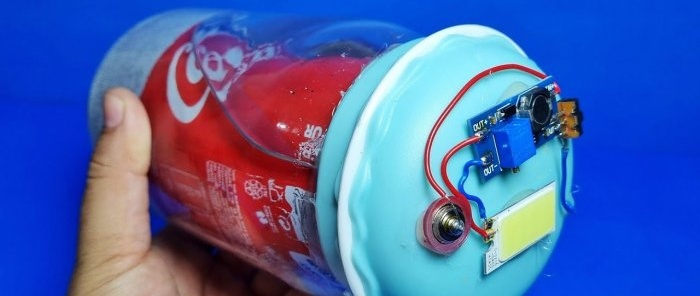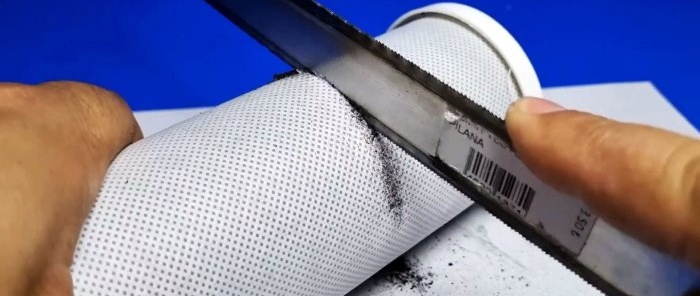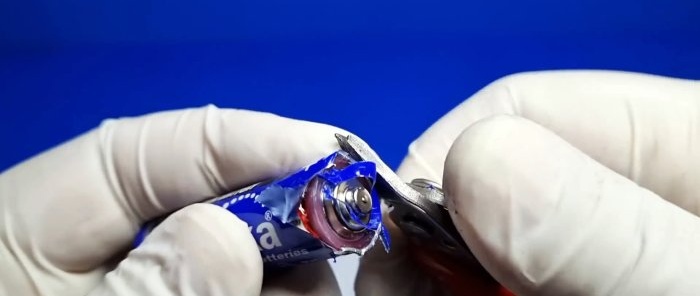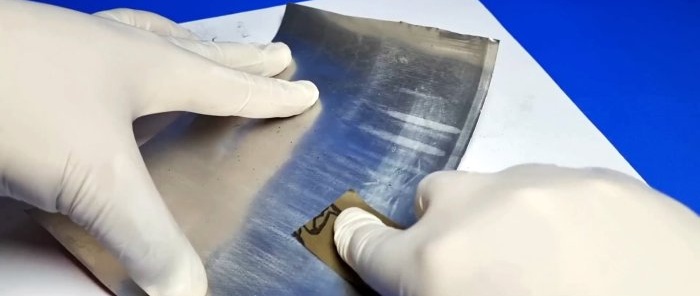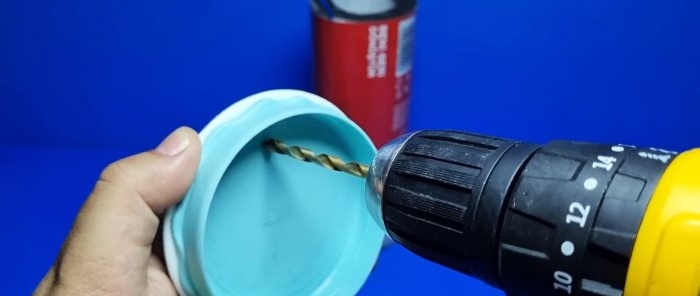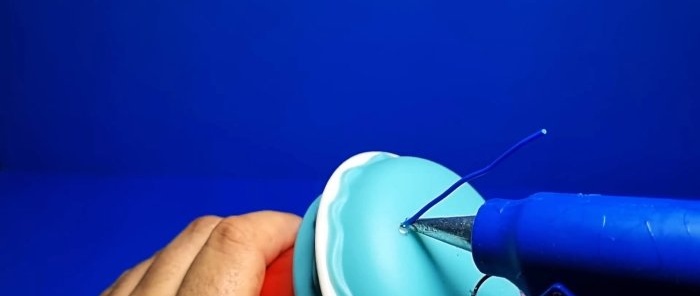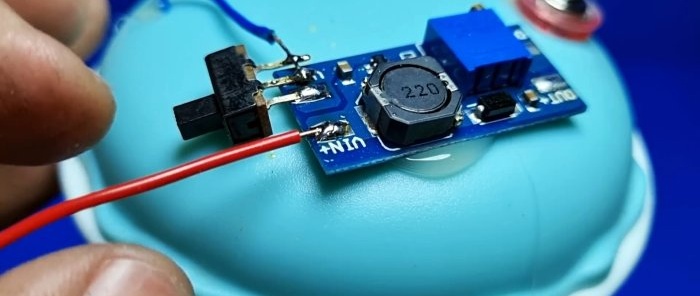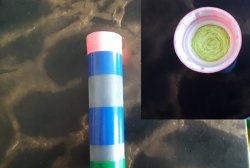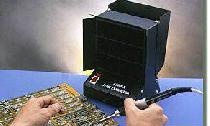This design of the flashlight is good because it can be stored for a long time without maintenance, and at one point it is picked up, refilled and ready for use. A very interesting design to repeat and just for reference.
Will need
- Airtight container with lid.
- Carbon filter for water.
- Aluminum can.
- Salt battery.
- Converter - http://alii.pub/5nl0lm
- LED Matrix 12V - http://alii.pub/5nl3pf
Making a water-salt flashlight without batteries
The carbon filter must be cut to the length of the container. This can be done with a regular hacksaw. The nylon mesh is first cut with scissors.
We disassemble the salt battery and remove the graphite electrode from it.
At the end of the cut filter we drill a hole for the electrode from the battery.
It should fit completely into the hole.
Next, you need to cut off the top and bottom of the aluminum can. Then cut the resulting cylinder lengthwise to form a sheet.
Using sandpaper, it is necessary to remove the protective varnish coating on the inner, shiny side.
We wrap the filter in aluminum sheet and fix it with hot glue.
We drill a hole in the lid for the electrode.
Glue it tightly with hot glue.
We also drill a hole in the lid for the wire from the sheet. Apply hot glue to the end of the filter and glue it to the lid of the container so that the electrode fits into the hole in the filter.
We also seal the outgoing wire with glue.
You can close the container and check that nothing is interfering.
Refilling and checking the salt battery
The result was a kind of water-salt battery. To season it, take water and pour a few tablespoons of table salt into it. Stir until dissolved.
Pour the solution into the battery container and close it.
Now if you connect multimeter to the electrodes, then the display will display a value of about 2.6 V. Of course, this is even for the glow LED will not be enough, but the current should be enough to start the converter.
Also, using hot glue, glue the converter to the top of the battery, solder the wires from the electrodes through the switch.
Connecting multimeter to the converter output. Using a trimmer resistor, we adjust the output voltage to 11-12 V.
We glue the LED matrix and connect it to the output of the converter.
Testing the flashlight in action
Everything is ready to test the lantern. We flip the switch.
And we see a bright light. Everything works as it should, there is enough power.
This flashlight is recharged by simply changing salt water and works until the electrodes are destroyed.
